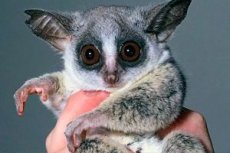New publications
In Angola, biologists have discovered a new animal
Last reviewed: 02.07.2025

All iLive content is medically reviewed or fact checked to ensure as much factual accuracy as possible.
We have strict sourcing guidelines and only link to reputable media sites, academic research institutions and, whenever possible, medically peer reviewed studies. Note that the numbers in parentheses ([1], [2], etc.) are clickable links to these studies.
If you feel that any of our content is inaccurate, out-of-date, or otherwise questionable, please select it and press Ctrl + Enter.

Biologists don't often visit the forest slums of Angola - and in vain. Quite recently, during another trip, they discovered a new species of primates in this area - they called them the newest species of dwarf galago - Galagoides kumbirensis.
It is worth noting that the main modern discoveries of new species of mammals are made genetically: scientists analyze the differences between animal DNA analyses, and then register a new related species. Given this, the discovery made in Angola is considered much more valuable. After all, the new animal is truly unique - both in its appearance and taking into account comparative analyses.
It often seems to us that modern people already know all possible and existing animals on Earth. However, wild nature continues to surprise humanity.
The primate discovered is a galago, a cute and fluffy little animal that is awake at night and sleeps during the day. It is an indirect relative of the loris lemur, and a distant relative of the Madagascar lemur and the aye-aye.
According to the scientists, they were conducting a scientific study in the Kumbira forest in the northwest part of the country. Suddenly, a strange squeal was heard, which ended with an equally strange chirping sound. The biologists rushed to the animal's call sign, expecting to see an ordinary galago in the thicket. However, instead, they noticed a completely different, unfamiliar animal.
Large eyes separated by a light line, dark fur on the muzzle, a pronounced voluminous tail - such characteristics are not typical for ordinary dwarf galagos.
The new species of primates was named after the forest where they were discovered – Galagoides kumbirensis. Their body length is from 17 to 20 centimeters – plus a tail of the same size. Such dimensions allow us to classify the animal as a “giant” among other dwarf galagos.
Scientists also note that the Kumbira forest area, which has been unfairly neglected by biologists, is a place of great biological diversity. However, due to the increased cutting of trees in recent years, animals are forced to migrate, and some are even threatened with extinction. Specialists are already proposing to include the newly discovered species Galagoides kumbirensis in the rare and endangered animals. However, this issue cannot be resolved yet, because there is no information about the exact distribution of the animal outside this territory.
Angola is a country with an unstable political situation. In the last century, active military actions were carried out on its territory - this was the struggle for independence and civil wars. This explains the reduced attention of scientists to the fauna of this area, because conducting research when there are battles nearby is not the best idea. It is for these reasons that today biologists are trying to learn as much as possible about the secrets and mysteries that are hidden in the vast forests of Angola.

 [
[